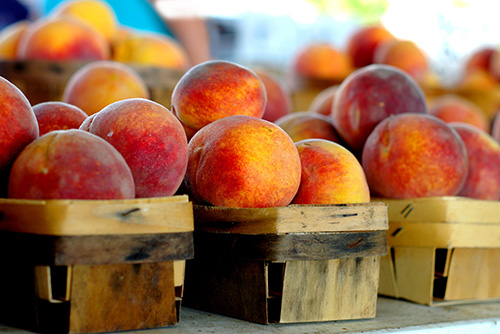As part of fruits and veggies month, Thrive! is featuring fruit and veggies each week. This week the vegetable is beets – red, golden, Chioggia. A whopping ninety percent of adults and children don’t get enough fruits and veggies, so add this one to your shopping list this week!
HISTORY
The beet comes from the wild sea beet, native to the Mediterranean and parts of the European and North African Atlantic coast. Only the leaves of the sea beet were eaten.
The scientific name for the beet is beetroot or table beet also the sugar beet and the mangelwurzel. The plant was first thought to be cultivated from the Greeks.
Romans were the first to grow the vegetable for its edible roots. That is why red beets are still known today as “Roman beets”. It was around the late 15th century that the first swollen beetroot is mentioned.
FUN FACTS
[list icon=”icon: check-square-o” icon_color=”#d81c5c”]
- The Chioggia beet (frequently called “candy cane beet” in the US), is striped hot pink and white, is named after Chioggia, fishing town in the province of Venice.
- Mangelwurzel (also known as “fodder beet”) is a large yellowish beetroot cultivated for animal feed. Its name means “poor root” and is generally eaten by people only in times of shortage, although it was also pickled and made into beer in the past.
- Beets are a traditional food eaten at Rosh Hashanah, the Jewish New Year.
- In Australia, a true Oz-style burger must have a slice or two of beets. Even McDonalds and Burger King have had to tow the line and include it in their menus.
- If you boil beets in water and then massage the cooled down water into your scalp each night, it is said to be an effective cure for dandruff.
[/list]
SEASON
The peak season for beets is generally mid-summer through late-fall but beets can be cold stored like apples or heavily mulched and so, in most regions, are readily available through the winter.
ATTRIBUTES
Beets are come in a variety of colors, including bright red and pink varieties. A few are the sunny golden beet; the striped Chioggia beet; the bull’s blood beet (dark purple) and there is even a white beet.
Beets are generally globe-shaped, but there are a handful of varieties that are cylindrical. Beets can come in a range of sizes as well but the best flavor and texture come from the baby-to-medium size beets. Larger beets can be tough and fibrous.
When looking for the perfect beet to purchase look for beets that feel heavy for their size, with no mushy or black areas.
WHAT YOU SHOULD LOOK FOR
Beets are feel heavier for their size when shopping for a beet. They shouldn’t be mushy or have black areas. If the beets are sold with their greens attached, the leaves should be sprightly and not wilted and have no yellow spots.
NUTRITION
Beetroot is very high in fiber, folate and manganese, and is a decent source of vitamin C, potassium and magnesium. The greens are really the nutritional powerhouse of the plant. They are even higher in fiber, and are a great source of vitamin A, C, K, riboflavin, calcium, iron, magnesium, copper, and manganese. The list goes on and on. The pigments responsible for both red and yellow beets, betalains, are antioxidants and may also be cancer preventatives.
Beets are known to help anemia and fatigue along with lowering your “bad” cholesterol and blood pressure. Beets are a great part of prenatal care.
STORAGE
Beetroots can be stored loose in your fridge in a veggie drawer for at least two to three weeks, or longer. Beet greens are more delicate and should be cooked within two or three days of purchase. (cut the greens from the roots and store in a plastic bag in the fridge.
HOW TO ENJOY
Beets are a great vegetable to enjoy in the summer and every single part of the table beet is edible, so no wasted parts.
[list icon=”icon: check-square-o” icon_color=”#d81c5c”]
- Cooking with beets can be fun! Beetroot can be eaten raw, roasted, boiled, steamed, sautéed and even made into chips. They are excellent paired with salty or creamy cheese (like feta or goat), nuts, and citrus.
- A great way to cook beets is to roast them whole, this way makes them sweet and earthy flavors appear.
- Beet leaves are great raw, boiled, steamed and sautéed. Add the leaves in as a replacement in recipes calling for spinach or chard.
[/list]
Check out this great source for recipes and fun ways to use beets in juices, cocktails, and food.



